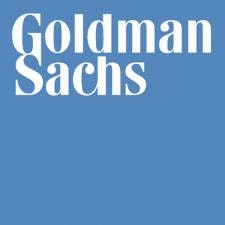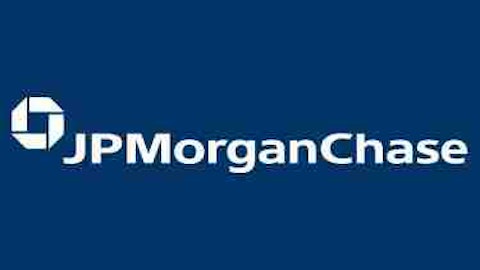Recent earnings releases by investment banks Goldman Sachs Group, Inc. (NYSE:GS) and Morgan Stanley (NYSE:MS) continue to reveal the relative directions of both firms. For Goldman, Q4 saw its profits triple from $1.01 billion in the final quarter of 2011 to $2.89 billion in Q4 2012: quarterly earnings per share of $5.60, far above than any estimate. Net revenues increased by 53% from $6.05 billion to $9.24 billion; 15.7% of which came from the sale of a hedge fund. Revenues in underwriting (equity and debt) increased by 132% to $897 million whereas revenues from investment banking and financial advice increased by 64% and 8% to $1.41 billion and $508 million respectively. If that wasn’t enough, market making recorded the biggest jump in quarterly revenues of any of Goldman’s units. Revenues there climbed by 109% from last year to $2.7 billion, making it the biggest source of the company’s revenues. In short it was a great quarter for Goldman.

Morgan Stanley’s shares have been struggling in the past three years due to the prevailing financial crisis and the disappointing performance of the company. The bank has been heavily exposed to the European debt crisis while the trading environment remained volatile throughout the past couple of years. Moreover, the bank has been relying on short term borrowing to finance its operations, which made the investors increasingly nervous. Following the collapse of Lehman Brothers, it took roughly $1.3 million to insure $10 million of Morgan Stanley bonds for a year. By mid-2011, this expenditure slipped to $449,000 a year, which was still at the high end of the market. Since the beginning of 2009 till the end of 2012, Morgan’s shares have been up 23.75% while those of its rivals such as Goldman Sachs and JPMorgan Chase & Co. (NYSE:JPM) have risen by 65.2% and 45.0% respectively. Morgan Stanley is now going on an aggressive cost cutting drive, has eliminated 1,600 jobs and has deferred cash bonuses for employees making more than $350,000.
Morgan Stanley also aims to reduce its risk-weighted-average assets of fixed income units to $235 billion by 2014 and below $200 billion by 2016. Last year, Morgan Stanley’s CFO Ruth Porat revealed, for the first time, that the company had $500 billion of risk weighted average assets, including $320 billion in fixed-income and commodities.
While Morgan Stanley has been going on a cost cutting drive, Goldman Sachs has also laid off 900 employees in 2012, but in the same year, Goldman Sachs also increased its employees’ compensation and benefits plan by 6% to $12.9 billion. Although the amount of compensation has increased annually, the ratio of revenue to compensation and benefits, which is a more accurate measure, has fallen from 42.4% in 2011 to 37.9% in 2012. This is one area where Morgan Stanley has failed. Despite the job cuts and deferring of cash bonuses to stocks that will be paid in three years, Morgan Stanley’s compensation to revenue ratio stood at 52%, far greater than its rivals, which is bound to invite the ire of investors including Mr. Loeb. In effect, Morgan pays too much out for what it gets in return.
Meanwhile, Morgan Stanley is nearly doubling its Chief James Gorman’s salary to $1.5 million from $800,000, after his total compensation in 2012 fell by 7% to $9.75 million. This is bowing to the political climate of outrage at bank executive bonuses. When bank balance sheets are as malleable as they have become, it is easy to, in effect, set your own salary. On a per week basis, Gorman now earns $9,616 less in salary than Lloyd Blankfein, the chief of Goldman Sachs.
In 2011, Goldman Sachs launched a cost cutting program of $1.4 billion and had planned to save an additional $500 million by the end of 2012. The layoffs have been a common phenomenon in the industry due to sluggish deal making, weak trading volumes, and economic uncertainty. So, if that’s the case, where is Goldman making all of its money from?
The U.K based NGO World Development Movement has pointed out that Goldman Sachs made $400 million by betting on food prices. Such speculation has in fact increased world food prices.The lack of legislation in this area, driven in part by International Swaps and Derivatives Association’s (ISDA) – an organization owned pretty much by all of the major investment banks — active lobbying has allowed financial institutions to beef up their earnings through commodity speculation.
The banks exist to turn a profit, and when the central bank is feeding you risk-free cash and effective immunity from prosecution why is anyone surprised that their behavior becomes ever more questionable? It is supposed to be the duty of the central banks and regulatory bodies to draw the line of when profit making ends and damage to public welfare begins. The central banks in North America and Europe have not taken any significant steps to end potentially damaging practices. So, instead of going after the banks for their fraud and theft – think MFGlobal – we are treated to the side-show of a U.S. Attorney General, himself likely guilty of illegal gun-running, pursuing prosecution against the ratings agencies for fraud. Someone has to be the fall guy after all, and the message to investors is clear. It will not be the banks.
This is why both campaign contributions to major politicians and fines paid to various government agencies, like the SEC, need to be seen as simply the cost of doing business, no different, in effect, than a slight rise in the corporate income tax rate. This is why the major bank stocks have all rallied so hard off of the Oct. 4, 2011 low. As the threat of unknown legal consequences recedes, investors can come back into the sector with confidence, regardless of the severity of the fine because it’s behind them now.
The article Banking Giants Beat Street on Austerity, Speculation and Politics originally appeared on Fool.com and is written by Peter Pham.
Copyright © 1995 – 2013 The Motley Fool, LLC. All rights reserved. The Motley Fool has a disclosure policy.



